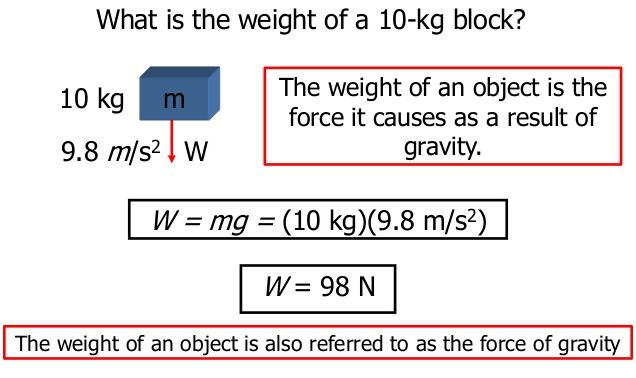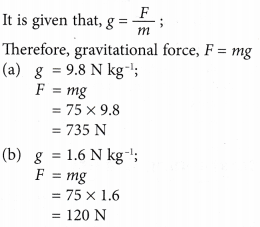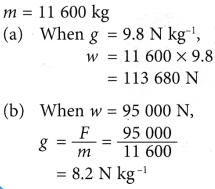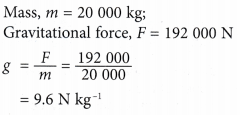Understanding Gravity
- When a boy accidentally drops a book from his hand. The book is pulled towards the Earth by the force of gravity.
 Fig. The book dropped by the boy is pulled towards the Earth
Fig. The book dropped by the boy is pulled towards the Earth - The force of gravity on the Earth is caused by a gravitational field around the Earth. The gravitational field is a region in which an object experiences a force due to the gravitational attraction towards the centre of the Earth. Figure shows the direction of the gravitational field.
 Fig. The direction of the gravitational field around the Earth
Fig. The direction of the gravitational field around the Earth - Gravitational acceleration is the acceleration of an object due to the pull of gravitational force.
- An object undergoes free fall if it is acted upon by gravitational force only. Near the surface of the Earth, all free falling objects will have a gravitational acceleration, g which is equal to 9.8 m s-2.
- Figure shows a stroboscopic photograph of a feather and an apple undergoing free fall in a vacuum. Both the feather and the apple fall with the same acceleration.
(A stroboscopic photograph captures the image of a moving object and shows its respective positions at regular intervals of time.)

- The gravitational field strength at a point in the gravitational field is the gravitational force acting on a mass of 1 kg placed at that point. Therefore,

Where, g = gravitational field strength,
F = force of gravity, m = mass. - The SI unit for gravitational field strength is N kg-1.
Also Read About: Newton’s Law of Universal Gravitation
Earth’s Gravitational Force
Weight

- The weight of an object is the force of gravity acting on the object.
- For an object with a mass, m, its weight, w is given by:
w = mg
where g is the gravitational field strength. - The SI unit for weight is newton (N). Weight is a vector quantity.
Example 1. An astronaut has a mass of 75 kg. Calculate the gravitational force on the astronaut when he is standing
(a) on the Earth with a gravitational field strength of 9.8 N kg-1,
(b) on the Moon with a gravitational field strength of 1.6 N kg-1.
Solution:

Example 2. The Hubble telescope has a mass of 11600 kg.
(a) Determine its weight when it is resting on Earth which has a gravitational field strength of 9.8 N kg-1.
(b) What is the value of the gravitational field strength if its weight at a particular orbit above the Earth is 95000 N?
Solution:

Example 3. At a particular point above the Earth, an aircraft of mass 20 000 kg experiences a gravitational force of 192 000 N. Calculate the gravitational field strength at that point.
Solution:

Example 4. A ball is dropped from a building and undergoes free fall. What is its velocity just before it touches the ground which is 100 m from where it is dropped?
[g = 9.8 m s-2]
Solution:

Activity 1
Aim: To determine the value of acceleration due to gravity.
Materials: Slotted masses, a piece of plank, cellophane tape, ticker tape
Apparatus: Ticker timer, 12 V a.c. power supply, stool, G-clamp
Method:

- The apparatus is set up as shown in Figure.
- A strip of ticker tape about 2.5 m long is cut and passed through the ticker timer.
- One end of the tape is attached to the 100 g slotted mass.
- The ticker timer is switched on and the slotted mass is released so that it falls onto the plank.
- The tape is analysed to determine the gravitational acceleration, g.
- Steps 2 to 5 are repeated for slotted masses of mass, m = 200 g and 300 g.
Results:

Discussion:
- The values of g for different masses are almost the same. This shows that the gravitational acceleration is constant. It does not depend on the value of the mass.
- The accurate value for g is 9.8 m s-2. The experimental values are smaller than this value due to unavoidable frictional forces and air resistance.